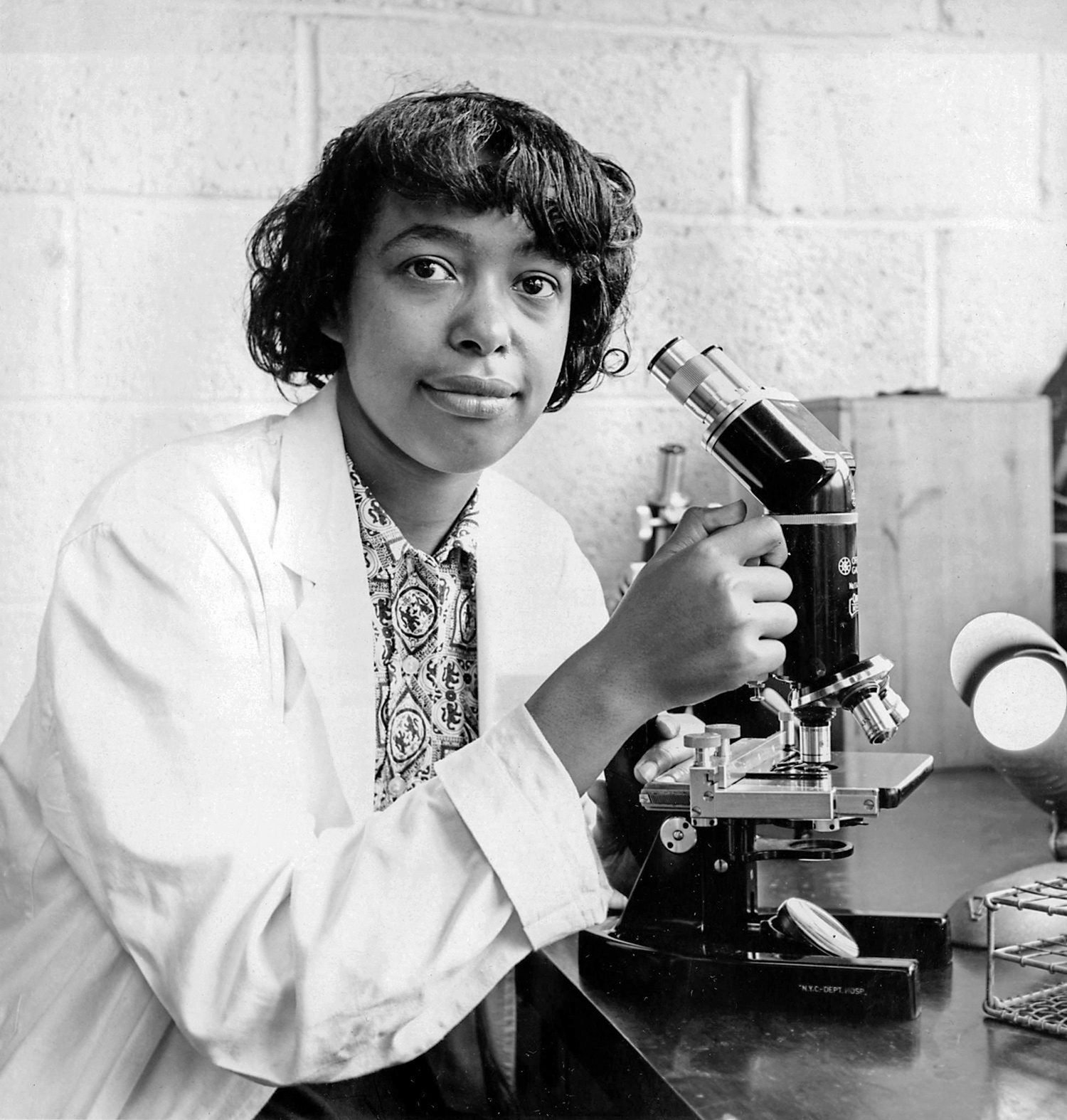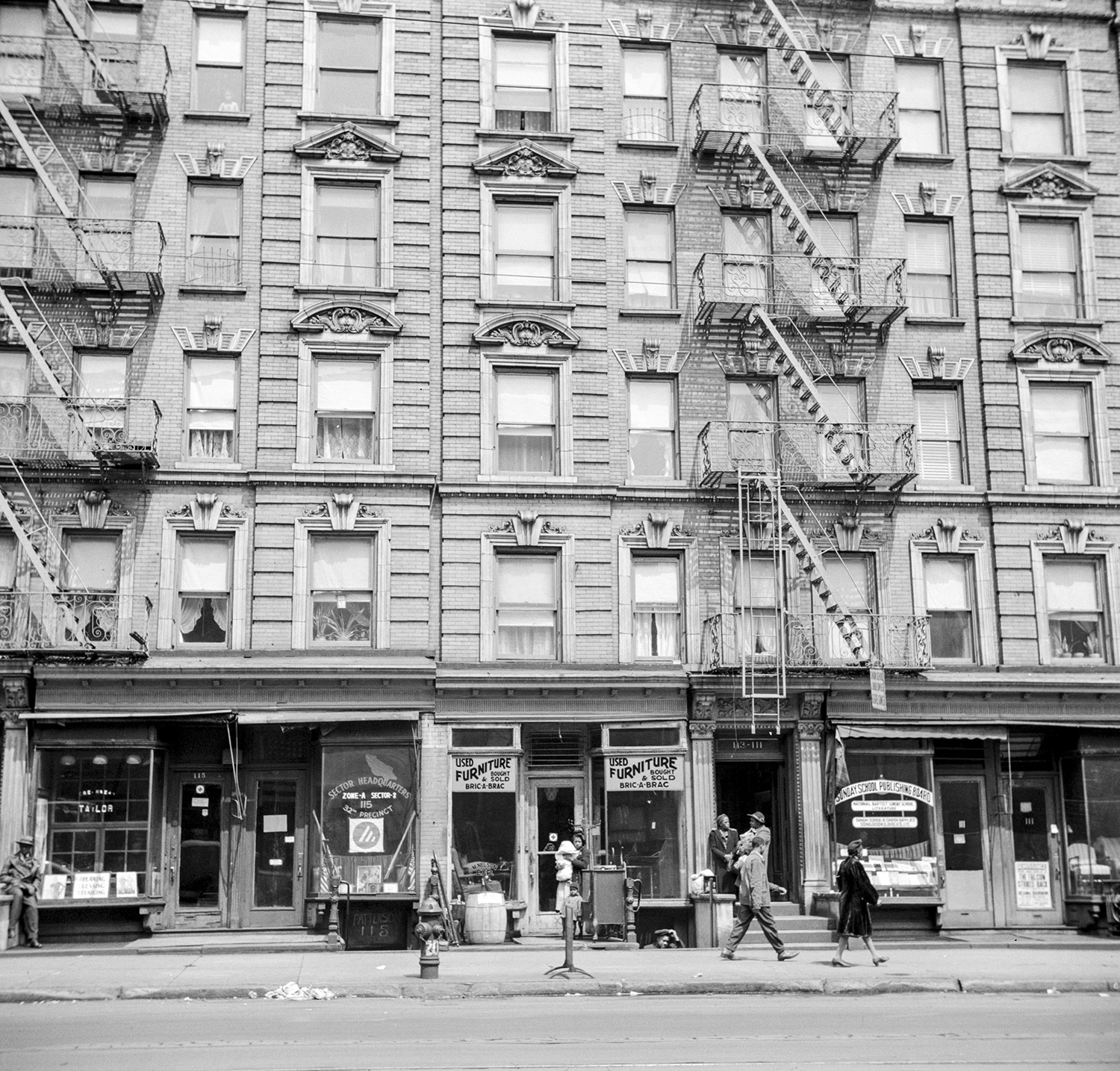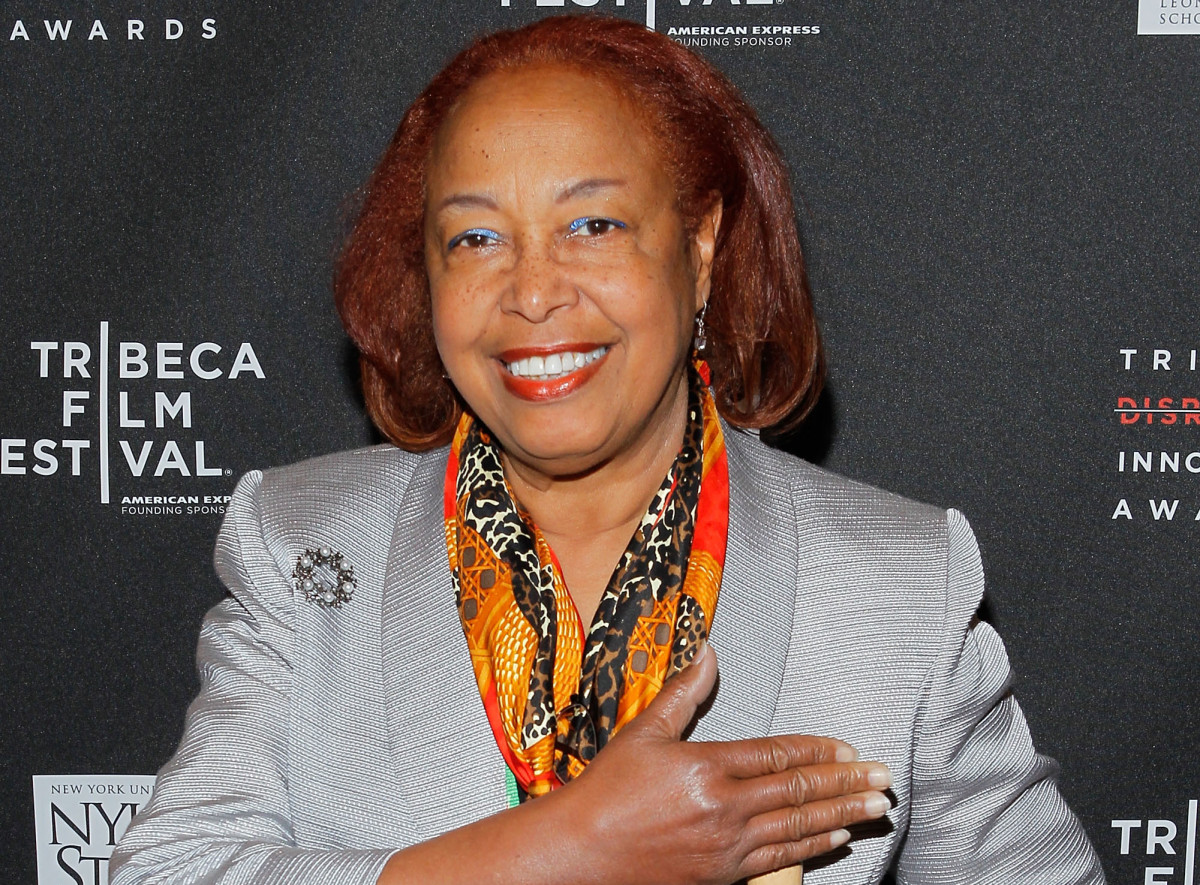
Sights on the prize
Dr. Patricia Bath, a visionary physician, scientist, inventor, and 2022 National Inventors Hall of Fame inductee, overcame barriers of race, gender, and socioeconomic status with grit and persistence.
10 min read
Each month, our Journeys of Innovation series tells the stories of inventors or entrepreneurs who have made a positive difference in the world. This month’s story focuses on Patricia Bath, 2022 National Inventors Hall of Fame Inductee, who pioneered Laserphaco cataract surgery, co-founded the American Institute for the Prevention of Blindness, and championed STEM education as an inventor, ophthalmologist, and African American leader.

In 1959, Patricia Bath, aged 16, won a National Science Foundation to conduct research in a lab at Yeshiva University. (The New York Times/Via: Herbert S. Sonnenfeld)
On the morning of August 15, 1959, the New York Age newspaper ran an article about a remarkable 16-year-old high school student from Harlem who “displays unusual interest in scientific research.”
”A girl of 16, full of charm and life, on summer vacation ... goes swimming, plays volleyball, picnics with her friends," wrote Ralph O. Gottlob, the article’s author, “unless she's Patricia Era Bath of 2031 Seventh Avenue, Manhattan.”
Bath had spent that summer on a grant from the National Science Foundation (NSF) doing cancer research at the Summer Institute in Biomedical Science at Yeshiva University’s Albert Einstein College of Medicine. She would later credit the fellowship as the catalyst for the many discoveries, accolades, and firsts that followed: first African American woman to complete a residency in ophthalmology at New York University, first female faculty member of the UCLA Jules Stein Eye Institute, first female African American doctor to patent a medical device, inventor of Laserphaco cataract surgery, and co-founder of the American Institute for the Prevention of Blindness. It is a testament to her legacy and impact that in 2022, three years after her death, she was posthumously inducted into the National Inventors Hall of Fame.
None of these accomplishments would have been possible without the hallmark character traits Bath displayed throughout her life: curiosity, service to others, and, above all, persistence.
Her parents, Gladys and Rupert Bath, were strong advocates of education, especially in the fields of science, technology, engineering, and mathematics (STEM). Education, they believed, was the path out of poverty and the means for professional success.

Born in 1942, Patricia Bath grew up in Harlem, New York City, pictured here in 1943. (Library of Congress)
“[A]t that time in Harlem, different economic classes all lived together, and that was because of segregation,” said Bath during a conversation with her colleague Dr. Eve Higginbotham in 2011. “So next door to the ironworker and domestic worker would be a physician, accountant, or lawyer. And so we had neighborhood role models, some of whom were close family friends.”
Patsy, as Bath’s family affectionately called her, thrived in STEM courses, and she was continually inspired by those around her. Her mother’s gift of a chemistry kit inspired Bath’s future experiments and research, as did the example from afar of Dr. Albert Schweitzer, who provided medical care to lepers in Lambaréné, Gabon. One of Bath’s high school teachers recognized her exceptional talents and nominated her for the NSF grant that paid for her Summer Institute in Biomedical Science.
“My NSF award and mentorship at Yeshiva was a life changing event,” said Bath, adding how proud she was “that as a teenage budding scientist from Harlem, I was first mentored by a white Jewish school teacher, Dr. Howard Leibowitz.”
After high school, she attended Hunter College in New York City, where she majored in chemistry and minored in physics and mathematics. Next, Bath attended Howard University’s College of Medicine in Washington, D.C., where she was mentored by the acting Chief of Ophthalmology, Dr. Lois A. Young. Reflecting on her tenure at Howard, Bath recalled that it was a happy time, filled with camaraderie and learning. However, it was also the 1960s, a time of social unrest and uncertainty as the nation confronted racial inequalities and injustices. In the aftermath of Dr. Martin Luther King Jr.’s assassination in 1968, Bath volunteered to provide medical services and worked with the Poor People’s Campaign in Resurrection City, a protest encampment on the National Mall in Washington, D.C.

In 1968, Patricia Bath provided medical care to participants in the Poor People’s Campaign in Resurrection City, a protest encampment on the National Mall in Washington, D.C., seen above. (Library of Congress)
“Service to the underserved was a natural evolution of my life from my Harlem roots,” as Bath put it.
After graduating from Howard, Bath returned to New York for her medical internship at Harlem Hospital Center, which was affiliated with Columbia University College of Physicians and Surgeons, and was a resident at New York University. While at Harlem Hospital, she noticed that the number of patients blind or visually impaired was exceptionally high. Through state blindness registries, she also observed that African Americans were twice as likely to develop blindness and eight times as likely to develop glaucoma, one of the leading causes of blindness. In 1976, she co-founded the non-profit American Institute for the Prevention of Blindness, dedicated to the prevention of blindness through education, community service, and eye care. In 1978, she published her research in what would become a seminal study that acknowledged the pivotal role public health plays in disease prevention. She also developed “community ophthalmology” as a new public health-based discipline to increase access to health information and preventable care.
Bath’s pioneering work and research continued on the West Coast when she was selected to be the first female faculty member at UCLA’s School of Medicine’s Jules Stein Eye Institute. When she first joined the department, her male colleagues were reluctant to have her seated close to them. Instead, she was placed near the female secretaries. Undeterred, Bath stayed the course and continued her academic pursuits. As she observed in a later interview, “When I was offered an office not equivalent to that of my male colleagues, I could’ve started marching. But I felt it was more important to focus on the prize.”
While working fulltime at UCLA Jules Stein, and as a county employee, Bath also taught at the Charles R. Drew University of Medicine and Science, a private historically Black graduate school. It was arduous work, and the days were long.
“She encountered so many barriers. Persistence was part of her upbringing,” said Bath’s daughter Dr. Eraka Bath, Director of Child Forensic Services and Associate Professor in the Department of Psychiatry at the Jane and Terry Semel Institute for Neuroscience and Human Behavior at UCLA. By nature, Bath was results-oriented, says Eraka; she was focused on the destination and had the innate confidence that she would reach it.
That confidence and persistence paid off in spades. With the support of Dr. Bradley Straatsma, who had given Bath her first academic appointment and lauded her accomplishments at UCLA, she became the first woman chair of an ophthalmology residency program in 1983 at Charles R. Drew. Another mentor who played an instrumental role was Dr. Danièle Aron-Rosa, a female ophthalmologist and pioneer in the use of lasers in ophthalmology. She invited Bath to work at her lab in Paris during her sabbatical in 1978. Bath was also able to conduct research at other facilities in Europe, including the Laser Medical Center in Berlin. These critical months overseas gave her the freedom to conduct research into laser cataract surgery without the administrative responsibilities of teaching or providing clinical and patient care. That unfettered research paved the way for Bath’s future invention.

From the late 1970s, Patricia Bath shared her research at conferences and other events all over the world. (Courtesy of Eraka Bath)
According to a 2019 column in the New York Times by board members of the Physician-Scientist Support Alliance, the “proportion of medical doctors engaged in scientific research [is] a paltry 1.5 percent of the physician work force.” As Bath’s daughter Eraka emphasizes, to be a female physician-scientist and an inventor was akin to being “an endangered species.”
“It’s very rare because it’s hard to do,” says Eraka. But armed with her insatiable curiosity and persistence, her mother continued and, as always, set her sights on the prize.
In 1981, her years-long research led to an invention: Bath developed the Laserphaco Probe that used lasers as a less invasive and painful procedure to remove cataracts. In 1988, she was granted U.S. Patent No. 4,744,360 for an “apparatus for ablating and removing cataract lenses,” becoming the first African American woman to receive a patent for a medical device. According to the National Inventors Hall of Fame, subsequent refinements led to additional patents. By 2000, Bath’s Laserphaco method was used throughout the world, including Europe and Asia.
Her continued advocacy for education and access to health care led Bath to travel around the world, and she found friends and connections in Great Britain, Europe, Asia, and Africa. Many of her trips were humanitarian in nature, and her daughter frequently joined her. Eraka recalls that these trips sparked her own desire to serve others and highlighted “the intersection of health and social justice and how they are inextricably tied.”
Bath was equally passionate and committed to her students, mentees, family, and friends. According to Eraka, “She was incredibly giving” and was deeply involved in the lives of her friends and family. In fact, Eraka and her friends affectionately called her “EOE” – the Expert on Everything – because of her curiosity and her tenacious desire to learn. Bath would routinely email them whenever she learned of a safety recall or health-related issue to ensure they were informed and safe.
Retirement provided even more opportunities to serve as a mentor and STEM education advocate. Bath developed an educational STEM app for the iPad and volunteered to speak to students in their classrooms. On April 3, 2019, less than two months before she passed away, she was invited to testify before the Senate Subcommittee on Intellectual Property on “Trailblazers and Lost Einsteins: Women Inventors and the Future of American Innovation.” Sharing her personal experiences, Bath told the Committee, “Of the many titles associated with my name and work, I choose to speak to you from the viewpoint, lens, and focus of a woman inventor. It is my hope that my sharing my views, experiences, and recommendations that other women inventors will keep the faith, not give up, and pursue their intellectual property goals with renewed vigor.”
In her 2011 conversation with Dr. Eve Higginbotham, hosted by the American Academy of Ophthalmology, Bath was asked about her greatest accomplishments. It was a question she wrestled with.

In 2012, Patricia Bath received a "Disruptive Innovation Award" from the Tribeca Film Festival for her technologies and procedures, which made moving images on the screen visible for more people than ever before. (Courtesy of Eraka Bath)
“Philosophically, I like to think that my greatest accomplishment has to be those moments when I’ve helped someone regain eyesight, when I remove the patient’s patch and he starts with the big E and goes all the way down to the 20/20 line.” But on further introspection, she thought it was her creation of community ophthalmology, the “new discipline of medicine in which you would spread globally the concepts of health education, blindness prevention, screening, [and] the use of epidemiology to … mobilize the entire community.”
As a female African American ophthalmologist and inventor born and raised in mid-20th-century Harlem, during the era of segregation, Bath faced obstacles that would have deterred and defeated many others. But she was Patricia Bath, the daughter of Gladys and Rupert Bath, and she clung tenaciously to her dream. She kept her “sights on the prize.” That undaunted persistence, along with her keen scientific knowledge and experience, restored patients’ sight. She changed the public health landscape with the creation of a community and public-health-centered discipline that highlighted the co-relation between public health, access to information and preventative care. And by her example of grit and perseverance, Bath continues to inspire other women inventors, scientists, and physicians.
Credits
Produced by the USPTO’s Office of the Chief Communications Officer. For feedback or questions, please contact inventorstories@uspto.gov.
Story by Miriam Wolff. Special thanks to Dr. Eraka Bath, daughter of Dr. Patricia Bath.
The photograph at the beginning of this story shows Patricia Bath in her laboratory in the 1990s. (Courtesy of Eraka Bath)
References
Bath, Eraka, Personal Interview with the author, March 9, 2022
Bath, Patricia, Testimony before the Senate Judiciary Committee on Trailblazers and Lost Einsteins: Women Inventors and the Future of American Innovation, April 3, 2019, www.judiciary.senate.gov/imo/media/doc/Bath%20Testimony.pdf.
“Conversation Between Patricia Bath, MD and Eve Higginbotham, MD,” Foundation of the American Academy of Ophthalmology, Museum of Vision & Ophthalmic Heritage, October 23, 2011.
Davidson, Martha, "Innovative Lives: The Right To Sight: Patricia Bath, Lemelson Center at the Smithsonian National Museum of American History, accessed April 25, 2022, invention.si.edu/innovative-lives-right-sight-patricia-bath.
Genzlinger, Neil, “Dr. Patricia Bath, Who Took On Blindness and Earned a Patent, Dies,” New York Times, June 4, 2019.
Gottlob, Ralph O., “Scientific Research Claims Patricia Bath’s Attention,” New York Age, August 15, 1959.
Jain, Mukesh K., Tadataka Yamada, and Robert Leifowitz, “We Need More Doctors Who Are Scientists,” The New York Times, September 23, 2019.
"Patricia Bath," National Inventors Hall of Fame, www.invent.org/inductees/patricia-bath.
“Teen-Ager's Study Links Cancer With a Deficiency in Nutrition,” New York Times, September 3, 1960.



